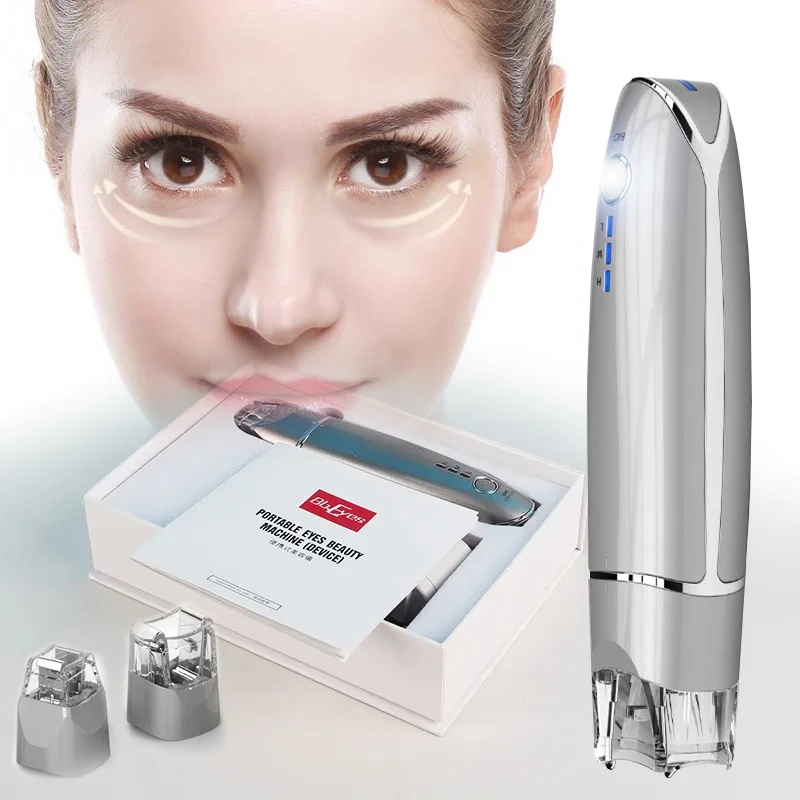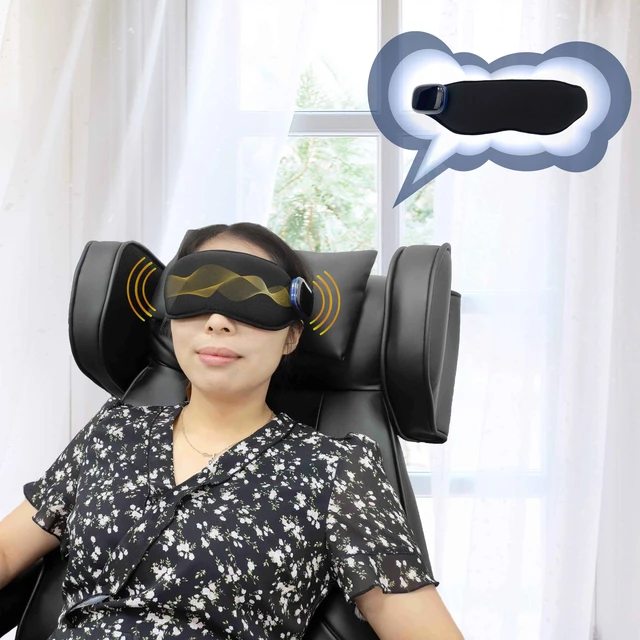Introduction
Eye massagers are valuable tools for promoting relaxation, reducing eye strain, and improving overall eye health. However, like any device, there are certain precautions and considerations to keep in mind when using an eye massager. While most individuals can benefit from the use of an eye massager, there are specific groups and circumstances where caution or avoidance may be necessary. In this guide, we will explore the situations and individuals who should be cautious or refrain from using an eye massager to ensure safety and optimal eye care.

Who should not use eye massager?
I. Eye Conditions and Health Considerations
-
Recent Eye Surgery:
- Individuals who have undergone recent eye surgery, such as LASIK or cataract surgery, should avoid using an eye massager until they have fully healed and received approval from their eye care professional. The eyes may be sensitive and vulnerable during the healing process, and using an eye massager could potentially disrupt the healing or recovery.
-
Eye Infections or Inflammation:
- If you are experiencing any form of eye infection, such as conjunctivitis (pink eye), or have inflammation in or around the eye, it is advisable to refrain from using an eye massager. These conditions can worsen with the use of a massager, potentially leading to further irritation and discomfort.
-
Severe Dry Eye Syndrome:
- Although eye massagers can provide relief for dry eyes, individuals with severe dry eye syndrome should consult with their eye care professional before using one. In some cases, the massaging action or heat compression may exacerbate symptoms or lead to further dryness.
-
Eye Trauma or Injury:
- If you have recently experienced trauma or injury to the eye, it is essential to avoid using an eye massager until the eye has fully healed. The massaging action and pressure could potentially aggravate or worsen the injury, delaying healing or causing further damage.

II. Sensitivity to Pressure and Heat
-
Sensitivity to Pressure:
- Some individuals may have heightened sensitivity to pressure, making the air pressure massage feature of an eye massager uncomfortable or even painful. If you know that you are particularly sensitive to pressure, it is advisable to start with the lowest massage intensity setting and gradually increase it if comfortable.
-
Sensitivity to Heat:
- If you have a known sensitivity or intolerance to heat, it is important to use caution when using an eye massager with heat compression. Start with the lowest heat level and pay attention to your comfort level. Discontinue use if you experience any discomfort, burning, or excessive heat sensation around the eyes.
III. Eye Conditions and Medical History
-
Glaucoma:
- Individuals with glaucoma, a condition characterized by increased pressure within the eye, should consult with their eye care professional before using an eye massager. The use of an eye massager may potentially worsen the condition or interfere with treatment.
-
Retinal Disorders:
- Some retinal disorders, such as retinal detachment or macular degeneration, require specialized care and treatment. Using an eye massager may not be suitable for individuals with these conditions, as it could potentially worsen symptoms or further damage the delicate structures of the retina.
-
History of Eye Disorders:
- Individuals with a history of chronic or recurrent eye disorders should exercise caution when using an eye massager. It is advisable to consult with an eye care professional before incorporating an eye massager into their eye care routine.

IV. Age and Pediatric Usage
-
Age Restrictions:
- Eye massagers are generally safe for use by adults. However, it is advisable to observe any age restrictions specified by the manufacturer. Some eye massagers may not be suitable for children under a certain age, or parental supervision might be necessary for safe and appropriate usage.
-
Pediatric Usage:
- Eye massagers designed specifically for pediatric use may be available, but it is important to consult with a pediatric eye care professional before using such devices on children. Their recommendations can ensure safe and effective usage for the child’s specific needs.
V. Dos and Don’ts for Safe Eye Massager Usage
-
Read the Instructions:
- Always read and follow the manufacturer’s instructions and safety guidelines provided with the eye massager. This ensures proper usage and minimizes the risk of injury or discomfort.
-
Consult Your Eye Care Professional:
- If you have any concerns or questions regarding whether an eye massager is suitable for you, or if you have a specific eye condition or medical history, it is advisable to consult with your eye care professional before incorporating it into your eye care routine.
-
Apply Moderate Pressure:
- When using an eye massager with air pressure massage, apply moderate pressure to the eye area. Excessive pressure can potentially lead to discomfort or affect the delicate structures of the eye.
-
Limit Usage Time:
- To prevent overuse and potential eye strain, adhere to the recommended usage time specified by the manufacturer. Extended usage beyond the recommended time may lead to discomfort or fatigue.

VII. Alternatives to Eye Massagers
-
Eye Exercises:
- If using an eye massager is not suitable for you based on the considerations mentioned earlier, you can opt for eye exercises as an alternative. Activities such as blinking exercises, near-far focusing, and eye rolls can help relax and strengthen the eye muscles, reduce eye strain, and improve overall eye health.
-
Warm Compress:
- Using a warm compress is a simple and effective way to provide relaxation and relief to tired eyes. Soak a clean cloth in warm water (not too hot) and place it over closed eyes for 10-15 minutes. This helps soothe the eye area, reduce eye strain, and promote blood circulation without the need for an eye massager.
-
Cold Compress:
- Cold compresses can be helpful for reducing puffiness and relieving eye fatigue. Wrap a cold pack or a clean cloth soaked in cold water around closed eyes for a few minutes. The cold temperature can constrict blood vessels, reduce swelling, and provide a refreshing sensation to tired eyes.

VI. Conclusion: Prioritize Eye Safety and Well-being
While eye massagers offer numerous benefits for eye relaxation and relief, it is essential to exercise caution and prioritize eye safety and well-being. Individuals with recent eye surgery, eye infections or inflammation, severe dry eye syndrome, eye trauma or injury, glaucoma, retinal disorders, or a history of chronic eye disorders should consult with their eye care professional before using an eye massager.
Additionally, individuals with sensitivity to pressure or heat, as well as those with age restrictions or pediatric usage considerations, should be mindful of the specific guidelines and recommendations provided by the manufacturer and eye care professionals.
By ensuring that you use an eye massager in a safe and appropriate manner, you can maximize its benefits while minimizing any potential risks or discomfort. Your eye health should always be a priority, and seeking professional guidance when needed will help you make informed decisions about your eye care routine.

